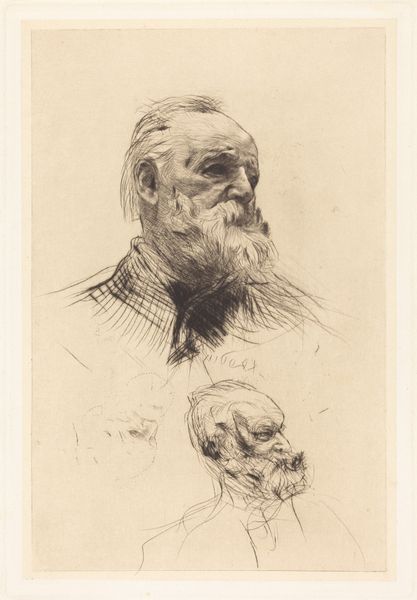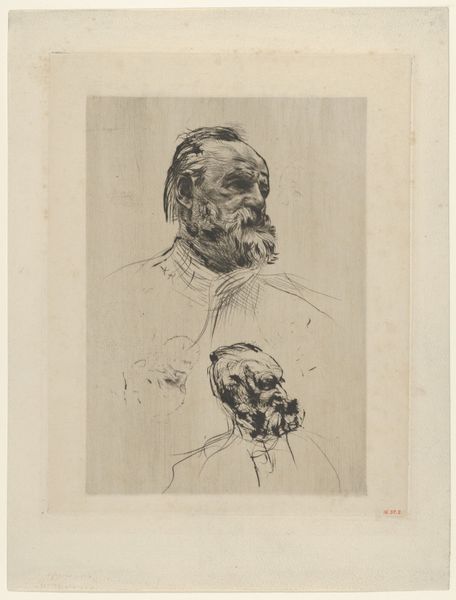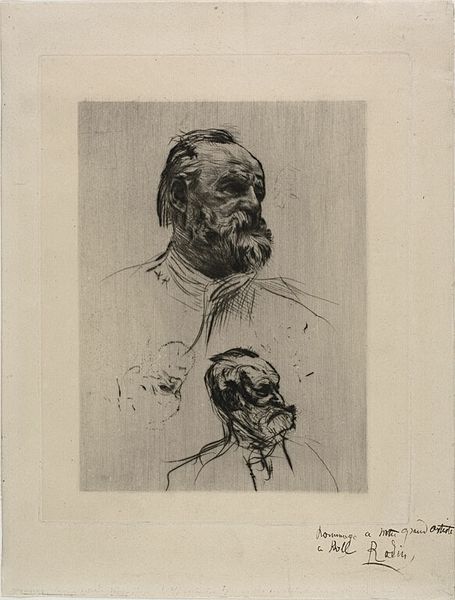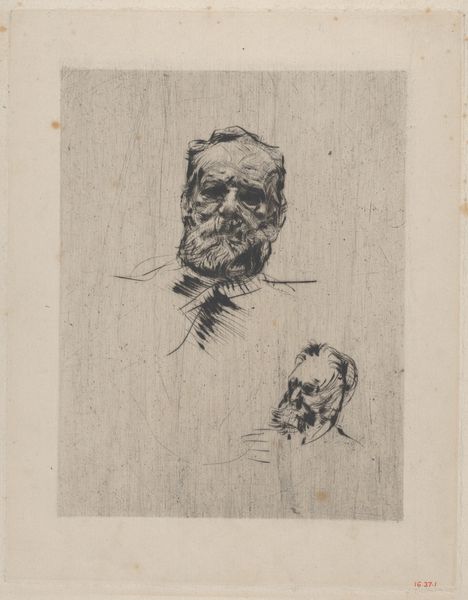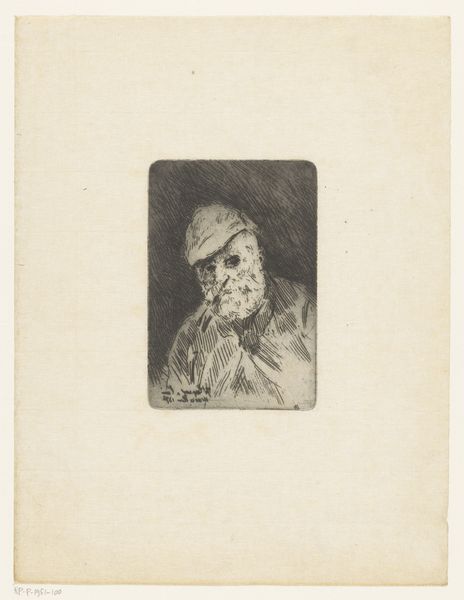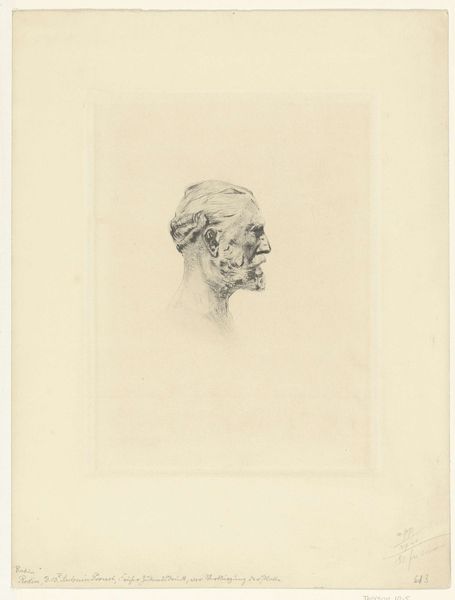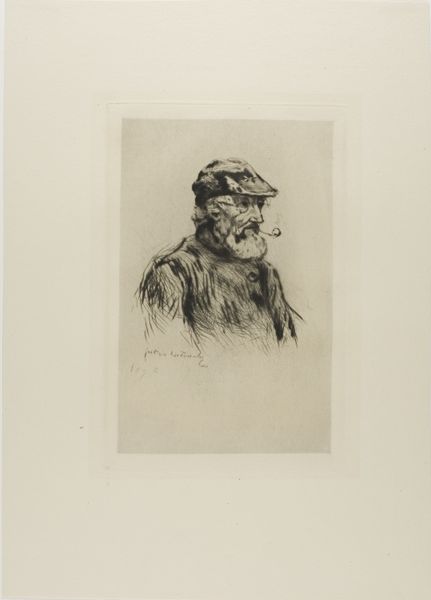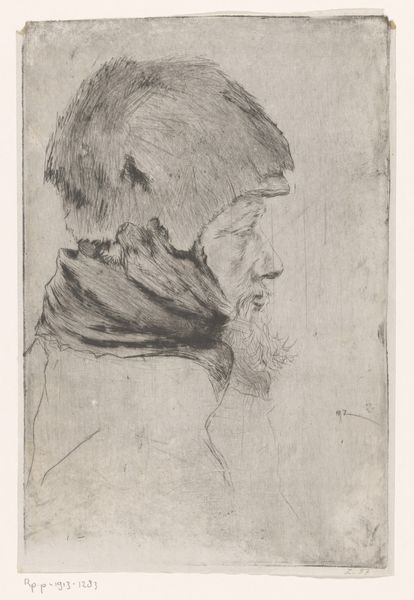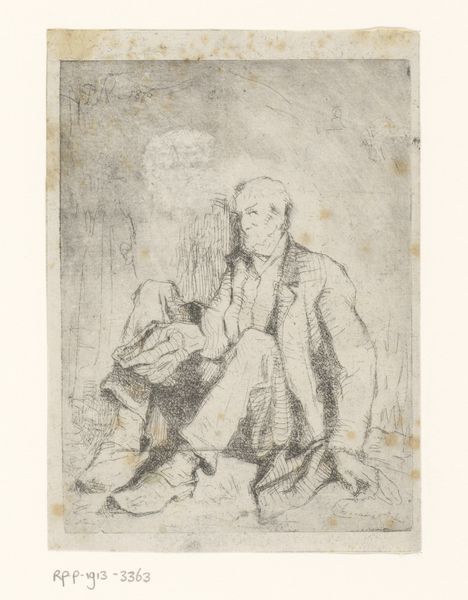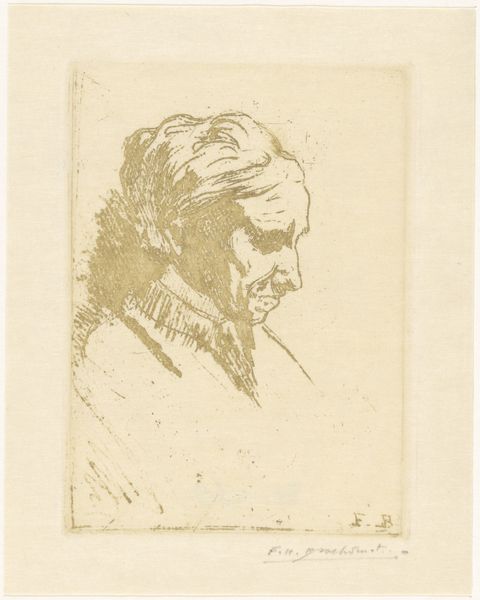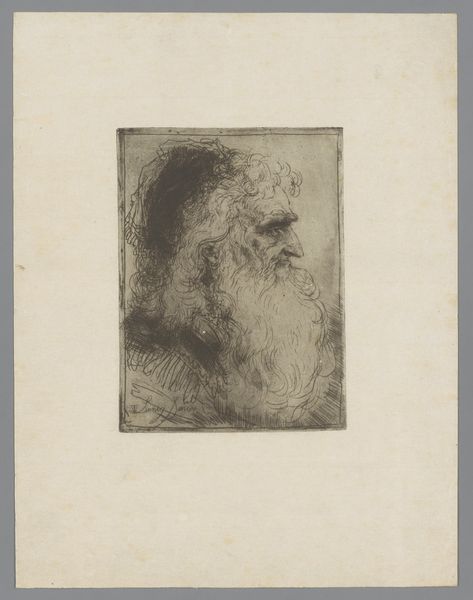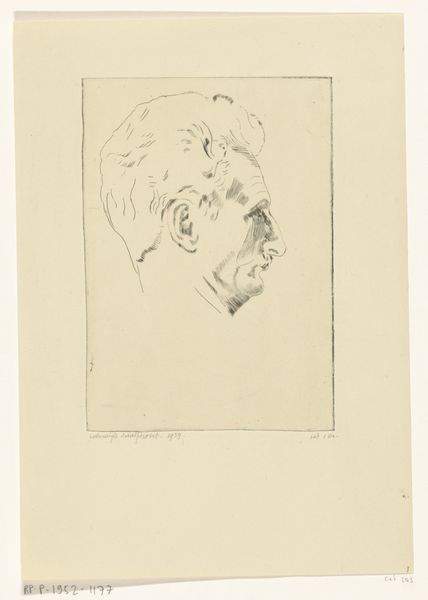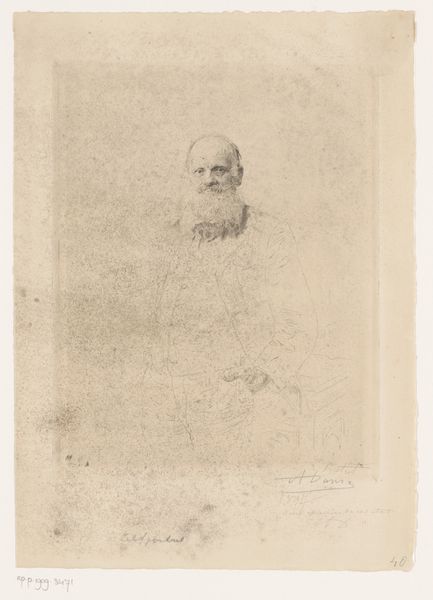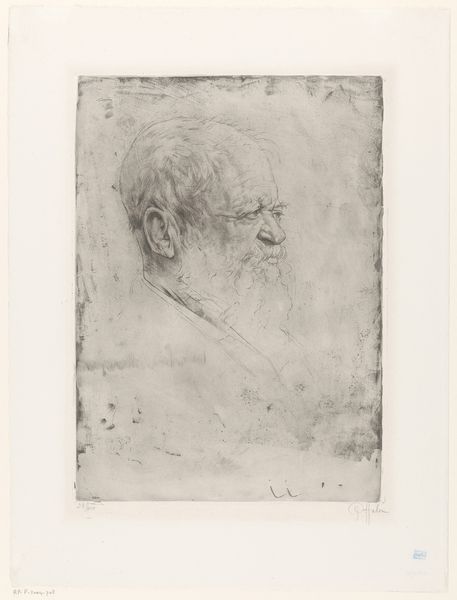
drawing, print, etching
#
portrait
#
drawing
# print
#
etching
Dimensions: plate: 22.3 x 17.5 cm (8 3/4 x 6 7/8 in.) sheet: 30.6 x 21.5 cm (12 1/16 x 8 7/16 in.)
Copyright: National Gallery of Art: CC0 1.0
Curator: At first glance, I am struck by its vulnerability. The image seems faded, fragile even. Editor: Indeed. Let's delve into this portrayal of Victor Hugo. What we have here is Auguste Rodin's etching, "Victor Hugo, De Face," created in 1886. It presents the celebrated writer in a profoundly intimate way. Curator: Intimate but also slightly ghostly, don’t you think? The way Rodin uses the etching technique... it almost feels like he's capturing Hugo's spirit fading into the paper. It really is like Rodin saw the literary titan as an icon, maybe even a sort of modern prophet. Editor: Precisely. Rodin's use of etching mirrors Hugo’s own style of writing. Like Hugo's dense prose, the etching involves multiple layers, subtle shading that slowly reveals hidden meanings, but with more emphasis on the image of the person rather than his intellectual achievements. We also perceive Hugo the person and not only the symbolic Hero, thanks to that seemingly faded drawing technique. Curator: It certainly is an unusual portrait. And I mean that both technically and symbolically. It shies away from overt displays of grandeur or even typical notions of conventionality, in spite of the sitter's importance. It even resembles a dreamlike recollection. It captures a very fleeting image, a mental reconstruction. Editor: I’d agree that this image serves as Rodin’s homage to Hugo, honoring not just the writer but also the man, acknowledging the toll of genius but also offering a softer take on such a controversial public figure. There’s a humility to it, perhaps even vulnerability. Curator: Seeing how this fragile yet enduring work evokes questions about remembrance, the cultural impact of important personalities, and Rodin's distinct way of memorializing literary titans through visual means makes you ponder. Editor: A fascinating insight. As our audience moves on, hopefully this etching will leave them considering the multiple ways in which an artist like Rodin could transform the established rules for conventional art.
Comments
No comments
Be the first to comment and join the conversation on the ultimate creative platform.
